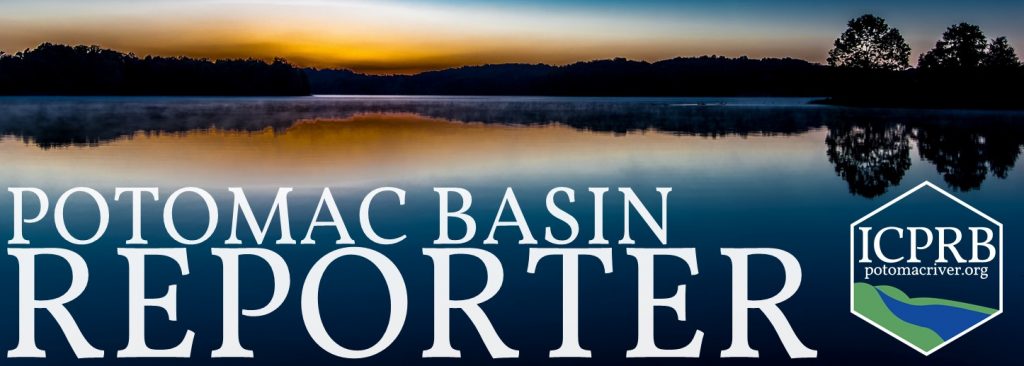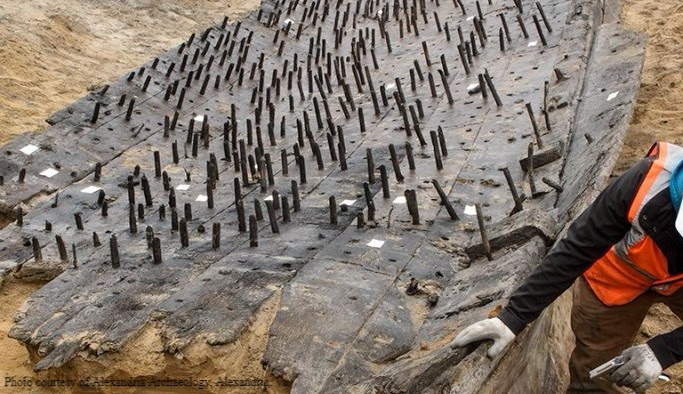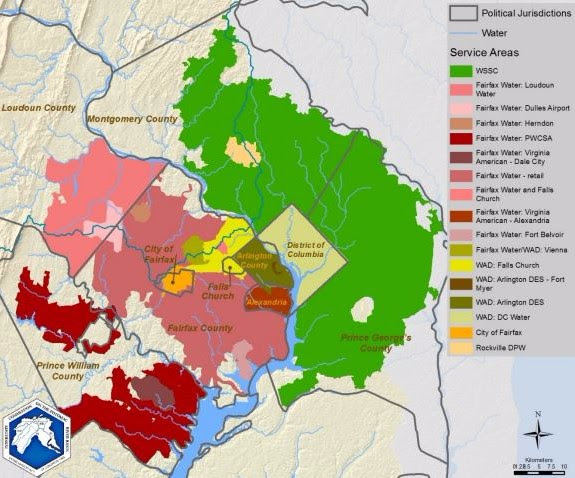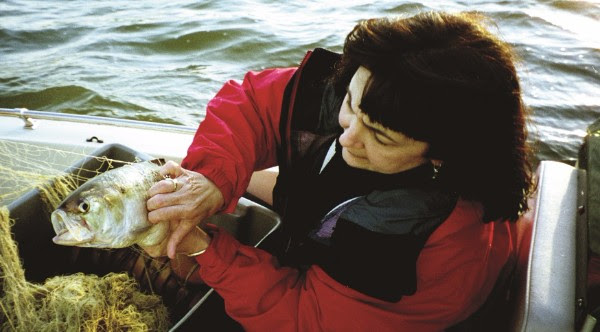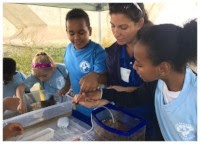IN THIS ISSUE
Ahoy, Ship of the Potomac!
What the Future of our Water Supply Might Look Like
American Shad, Striped Bass Show Good Recruitment this Year
Common Plant Species Found in the Potomac River
Ahoy, Ship of the Potomac! |
What the Future of our Water Supply Might Look Like |
When residents of the Washington metropolitan area turn on their taps, potable water comes out. That it is a largely thoughtless practice is a testament to decades of careful planning and cooperation among area water suppliers assisted by the Interstate Commission on the Potomac River Basin (ICPRB). The commission’s Section for Cooperative Water Supply Operations on the Potomac River (CO-OP) studies water use in the region, organizes coordinated utility operations during extreme droughts, and assesses the reliability of current and future raw water supplies. The ICPRB also helps basin water suppliers protect the region’s drinking water sources.
A new CO-OP study is proposing a range of solutions to increase the capacity of the region’s water supply, which could fail to meet unrestricted demands by 2040. In this case, there would be a small probability of failure if no action is taken to reduce water use during an extreme drought. The study, “Washington Metropolitan Area Water Supply Alternatives,” also provides information on options for a reliable water supply out to 2085. Alternatives have been evaluated according to their capabilities to increase future system reliability in the face of growing metropolitan area demands, decreasing river flows due to upstream consumptive use, and the potential impacts of climate change.
The options for augmenting future supply are both structural and operational. Many have been the subject of past investigations by metropolitan area water suppliers. Although most of the structural alternatives (for example, conversion of stone quarries to store water from the Potomac) would provide water directly to only one or two suppliers, all would provide regional benefits by reducing Potomac River withdrawals during times of low flow. All structural alternatives would require significant investments in new infrastructure including new underground conduits to transfer raw and/or treated water from one part of the supply system to another. The operational alternatives would require little or no infrastructure investment. They would instead require new cooperative agreements, and/or contracts between water suppliers, and/or investment in research to develop new operational tools and policies.
In general, the study found that combinations of structural and operational alternatives should be in place to ensure system reliability in the future. For the medium-term planning horizon of 2040, two strategies for phased implementation of quarries and operational enhancements were recommended for further refinement. These two combinations of alternatives were selected in part to ensure system reliability under a moderately severe climate scenario with a 7 percent decrease in average summer stream flows.
The strategies also consider the need for steps toward broader regional cooperation to help prepare for more severe challenges that may occur in the decades after 2040. Over the longer-term planning horizon, by 2085, study results indicate that most of the proposed alternatives will be needed to ensure future reliability.
“This is the next step in keeping the area’s water supply able to meet the demands of residents,” said ICPRB Executive Director Carlton Haywood. “The region’s water supply will maintain its very high level of reliability with proactive planning and actions by the water providers and governments. This level of planning, cooperation, and execution is why we are looked upon as an example by other regions,” Haywood said.
|
American shad and striped bass stocks had good spawns in the Potomac during 2017. Maryland’s annual young-of-the-year survey consists of seine net hauls at 22 locations around the Maryland portion of the Chesapeake Bay to gauge how many fish were hatched after the springtime spawn. The survey is an important tool in measuring the health of Chesapeake Bay and tidal river fisheries.
This year’s survey showed encouraging numbers for both striped bass and American shad. Many areas of the bay contributed to the striped bass number, while American shad reproduction came almost entirely from the Potomac.
Overall, bay-wide numbers for both the species were improved over a poor 2016. Maryland Department of Natural Resources Fisheries Biologist and manager of the young-of-year survey Eric Durrell noted that spring weather conditions, including river flow, water temperature, and other factors heavily influence the success of migratory fish species such as the striped bass and shad. The fish time their runs upriver based on these conditions, which give the eggs and larvae the best environmental conditions for success.
Striped bass in the Potomac were near the long-term average. American shad were well above the long-term average on the Potomac, and should help buoy stocks after a phenomenal 2015 Year Class. The same could not be said for the rest of the bay, where reproduction was minimal. “We caught 1,093 American shad during the survey,” Durrell said, “And 1,004 of those fish came from the Potomac.” He noted that the river has historically spawned a lot of shad and that the modifications of Little Falls Dam restored miles of historical spawning and nursery habitat for the fish. In the upper bay, The Susquehanna has several dams that limit the kind of habitat the fish needs, Durrell said.
The Potomac has benefitted from an ICPRB organized coalition of government agencies, nonprofits, schools, and teachers who played a role in aggressively stocking the river for about 10 years and pushed for the modifications to the dam that reopened about 10 miles of the fishes’ habitat. The project is one of the success stories of the Chesapeake Bay cleanup. Read more about the project online.
American shad reproduction has not been going well on the James and Rappahannock rivers in Virginia, despite a multi-year stocking effort that has, at times, used eggs taken from Potomac fish. A lack of progress toward goals and budget considerations have curtailed the stocking efforts on those rivers.
More information on the juvenile striped bass program and the more than 100 species of fish that are seen during the effort is available online.
The Past, Present, and Future of Potomac Aquatic Plants and Why they Matter |
For many people, a boat trip or walk along the shores of the metropolitan Potomac includes seeing a lot of aquatic plants (as well as some algae). Many sections of the Potomac support lush grass beds during the warm months. This has not always been the case, and the growth of submerged aquatic vegetation (SAV) has both signaled and been a major factor in the improved water quality of the river. The resurgence of many species of SAV during the last four decades points to the river’s revitalization, noted Nancy Rybicki, a U.S, Geological Survey scientist who has monitored Potomac aquatic plant growth during that time.
Rybicki periodically updates groups about the river’s plant status, as she did recently at a meeting of the Friends of Dyke Marsh. The packed room was given a history lesson, as well as warnings about water chestnut, an aquatic plant that once crowded the river downstream of Washington, then was eradicated, and has recently reestablished.
Rybicki’s focus over the years has been the upper tidal Potomac. The lower Potomac has not fared as well. The saltier lower river still suffers from water clarity and low dissolved oxygen issues, and is more strongly affected by Chesapeake Bay water quality issues.
The Potomac’s plant populations declined significantly from nutrient and sediment pollution and accompanying algal blooms through the 1930s but massive water chestnut stands downstream of Washington remained. Unlike other aquatic plants, the rooted water chestnut lives on the water’s surface where it can get the sunlight it needed to flourish, despite the sediment and pollution. By 1933, 10,000 acres of dense water chestnut beds clogged the river from Washington, D.C. to Quantico, Va. The growth was finally controlled by a multi-year harvesting and eradication effort by the U.S. Army Corps of Engineers that ended in 1945. Removal by hand continued until at least 1965.
Sewage treatment has improved greatly beginning in the 1970s, resulting in some water quality improvements. About 1983, some vegetation returned to the metropolitan river. Monitoring revealed that the plants were hydrilla, a non-native plant often mistaken for the resident plant elodea. They can be distinguished by the number of leaves that encircle the stem―elodea has 3 leaves while hydrilla has 4-5 leaves per whorl, giving the plant a bushier look. Based on hydrilla management schemes in Florida, which was spending millions of dollars a year, the ICPRB brought groups together to assess the issue. Eventually, an intergovernmental group started mechanically harvesting the plants in areas with high boat traffic.
Although not a native plant, hydrilla stands helped improve water clarity, and hydrilla was followed by a number of other, native, aquatic plants that returned to the river. Hydrilla remains the most common plant, but now shares the river with about 20 other species of plants. Learn to distinguish some of the most common species in the article below. Both the amounts and diversity of aquatic plants increased 10-fold from 1990 to 2007, and continues to increase, Rybicki noted. The growth of Potomac plant populations in a fragile but improving Potomac during that time has been uneven, with weather conditions in any given year (stormy springs with reduced sunlight, high flows that scour the river bottom, cooler temperatures, and other factors) promoting or reducing plant growth.
The growth of aquatic plants in the Potomac has helped improve water quality, helping make the river habitable to more plants, as well as providing food, cover, and water clarity that supports more fish and other creatures in the Potomac ecosystem.
Common Plant Species Found in the Potomac River
The metropolitan Potomac River, devoid of aquatic plants in the late 1970s, saw the return of both native and invasive plants in the following decades. Plant populations in the river grew by a factor of ten from 1990-2007. More than 20 species of plants now call the river home, these include:
 |
Hydrilla (Hydrilla verticillata): is an invasive plant that was one of the first to appear in the river’s resurgence of plants in 1981, remains the most common species on the river. It grows in dense beds and can be found in both the fresh and tidal waters. (Photo: David J. Moorhead, University of Georgia, Bugwood.org) |
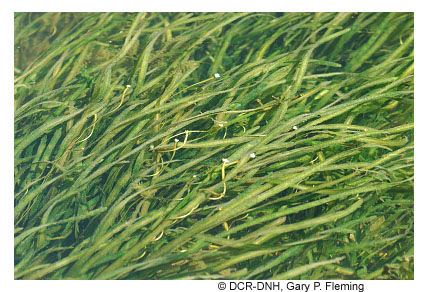 |
Wild celery (Vallisneria americana): is a native plant that is an important food source for birds. (Photo: Gary P. Fleming, DCR-DNH) |
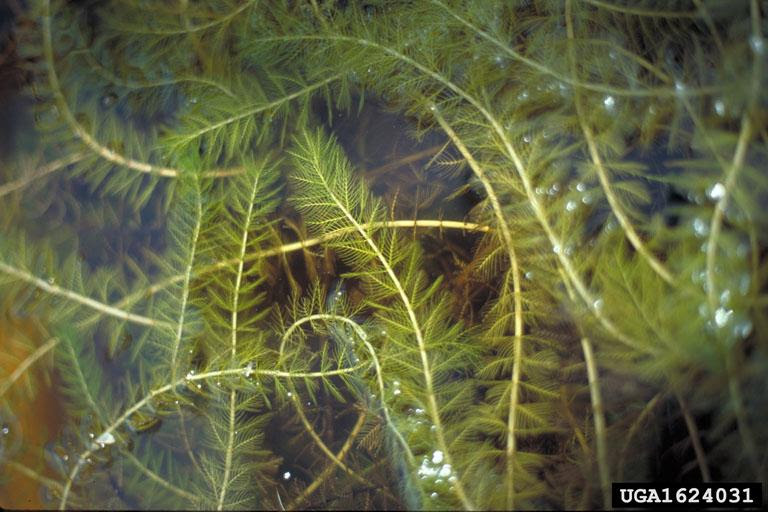 |
Eurasian watermilfoil (Myriophyllum spicatum): is a non-native plant favored by Potomac sport anglers. Its feather like leaves make it less dense than stands of other plants, allowing anglers to penetrate the beds with lures and catch fish. (Photo: Wisconsin DNR) |
 |
Coontail (Ceratophyllum demersum): also known as hornwort, has slender, densely branched stems. It does not put roots into the river bed, but lives as long strands anchored by other plants or structure. It spreads mainly through segments of plant breaking off and floating to new areas. (Photo: Paul Skawinski, 2009) |
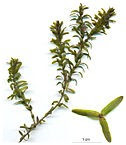 |
Waterweed (Elodea canadensis): is a native plant that looks a lot like hydrilla. It is primarily found in fresh water, but can tolerate some salt and is found in the tidal Potomac as well. (Photo: Christian Fischer) |
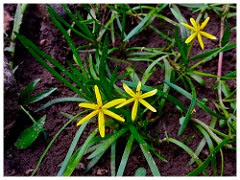 |
Water stargrass (Heteranthera dubia): is a native plant with grass-like leaves and sprouts small yellow flowers later in the summer. The plant is found mostly in the freshwater river, but has been extending its range into the upper tidal river. (Photo: Fritz Flohr Reynolds) |
 |
Water chestnut (Trapa Natans): has only recently become an issue on the Potomac, but may be spreading from stormwater ponds into the river. If you see it, report it! See the article above for more information. |
Quiz Results
It’s not too late to take the quiz! Click here to take it before reading further. Then come back here to compare your results. The most correctly answered question asked to identify how many jurisdictions the Potomac River spans. A whopping 86% of you chose the correct answer of four states (Maryland, Virginia, West Virginia, Pennsylvania) and the District of Columbia. The most difficult question, with only 46% of people answering correctly, was the average number of gallons withdrawn from the Potomac River each day. This includes irrigation, agriculture, residential and all other uses. This number spikes in the hottest months of the summer, but the average daily withdrawal from the Potomac is 486 million gallons, or 736 Olympic sized pools.
ICPRB in the Community
Staffers at ICPRB spent many fun summer days sharing their love of the Potomac River watershed with the residents who call it home. The ICPRB tables shared information on water quality, educator resources, and other information on the basin. Here are just a few of the events they enjoyed:
Festival del Rio – This multi-cultural, bilingual event is designed to give Latinos an opportunity to learn about local environmental issues.
Jones Point Park Event (Alexandria, Va.) – 75 fourth-graders enjoyed a day of outdoor environmental education at this Every Kid in a Park event.
West Va. Science Teachers Association Conference (Wheeling, W.Va.) – ICPRB staff shared our m any educator resources with West Virginia science teachers.
As part of ICPRB’s Score Four program, the high school students celebrated the Conservation Garden installation at Northwestern High School in Hyattsville, Md. Watch the sign dedication ceremony on Facebook.
What’s New Online

Bilingual Educator Resources – Bilingual lessons are available in English and Spanish for ICPRB educational programs.
Washington Metropolitan Area Water Supply Alternatives – This study assesses a range of solutions to increase the capacity of the region’s water supply, which could fail to meet unrestricted demands by 2040.
Water Quality Trends – an online visualization tool to quality assure water quality data, allowing one to quickly evaluate trends using various parameters.
Chessie BIBI – a multi-metric index of stream health applicable to freshwater streams and small rivers across the Chesapeake Bay watershed.
2016 Drought Exercise Report – For over two decades, ICPRB’s CO-OP has been conducting annual drought exercises for the Washington Metropolitan area.
Watershed Activities to Encourage Restoration – simple, low-cost projects that your organization can use to help protect and restore your watershed.
Calendar of Events – Fun events in the watershed!
**The content of this email does not represent the policies of ICPRB or its Commissioners.**

